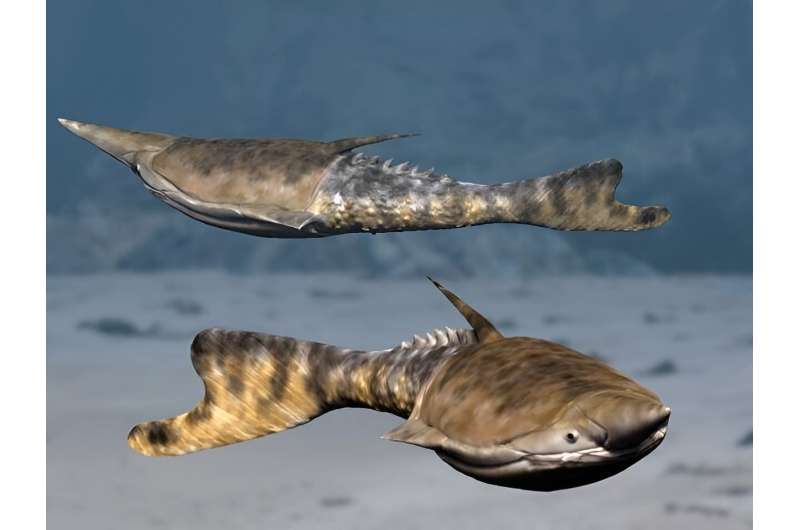This article has been reviewed according to Science X's editorial process and policies. Editors have highlighted the following attributes while ensuring the content's credibility:
fact-checked
peer-reviewed publication
trusted source
proofread
Feeding mode of ancient vertebrate tested for first time

A feeding method of the extinct jawless heterostracans, among the oldest of vertebrates, has been examined and dismissed by scientists at the University of Bristol, using fresh techniques.
The findings, published in the Journal of Vertebrate Paleontology, reveal that the forward-facing denticles, small tooth-like structures, on the oral plates of heterostracans are not an adaption to filter feeding. The paper is titled "Testing hypotheses of pteraspid heterostracan feeding using computational fluid dynamics".
A major theory for humans' deep evolutionary history is that the early vertebrate ancestors evolved from spineless filter feeders, following a driven trend towards active, predatory food acquisition.
Lead author Madleen Grohganz from Bristol's Palaeobiology Research Group said, "The origin of vertebrates, our very own evolutionary lineage, is widely regarded as one of the most important events in evolutionary history. Early vertebrate evolution is a much-debated topic among biologists and paleontologists and there are still many unresolved questions.
"The extinct jawless heterostracans, among the oldest vertebrates, are key to this evolutionary scenario. But no one has been able to work out their feeding mode, whether they were filter feeders or predators. Using modern computational paleobiological methods our study is among the first to actively test feeding mode hypotheses of these early jawless vertebrates."
Heterostracans possessed a feeding apparatus of rod-like oral plates with rows of forward-facing denticles outwards of the mouth. The forward-facing orientation has previously been interpreted as an adaption for suspension feeding.
To test this hypothesis, the team used computational fluid dynamics (CFD), a technique from engineering that simulates fluid flows and their interaction with solids. They simulated water flow around 2D models consisting of rows of denticles both forward-facing and reversed so they could assess whether either of these orientations create recirculation patterns hydrodynamically linked to suspension feeding.
All the tested models, independent of denticle orientation, showed similar flow, velocity and vorticity patterns. Recirculation patterns, highest velocity and vorticity developed directly on top of the denticles and in spaces between the denticles.
Based on these analyses the team rejects the hypothesis that denticle orientation is a specific adaption to suspension feeding. The denticles only occur on the lateral sides of the very tip of the oral plates and may instead have served to prevent material, oversized food particles, sediment particles or parasites from lodging between the plates.
Madleen said, "Our study is one of the first, that actively tests feeding mode hypotheses of early jawless vertebrates instead of making poorly constrained inferences.
"This is an important step towards better understanding the feeding mode of early jawless vertebrates, testing evolutionary scenarios and ultimately shedding more light on early vertebrate evolution."

The exact nature of heterostracan feeding remains an open question. Other feeding hypotheses, which propose a mechanical function related to active biting or scavenging, still need to be tested.
Madleen added, "For this we need a better understanding of the original 3D geometry of the whole oral plate apparatus, which we can gain from studying articulated specimens instead of isolated oral plates.
"We can use these oral apparatus reconstructions to constrain the possible movement of the oral plates and use the models in further computational functional testing. This will enable us to gain detailed knowledge of the feeding mode of heterostracans, which is crucial to elucidating early vertebrate evolution.
"Previous feeding mode hypotheses of early jawless vertebrates have mainly been based on poorly constrained inferences. But using computational palaeobiological methods, we were able to actually test and reject one of these feeding mode hypotheses."
More information: Madleen Grohganz et al, Testing hypotheses of pteraspid heterostracan feeding using computational fluid dynamics. Journal of Vertebrate Paleontology (2023). DOI: 10.1080/02724634.2023.2272974
Journal information: Journal of Vertebrate Paleontology
Provided by University of Bristol





















